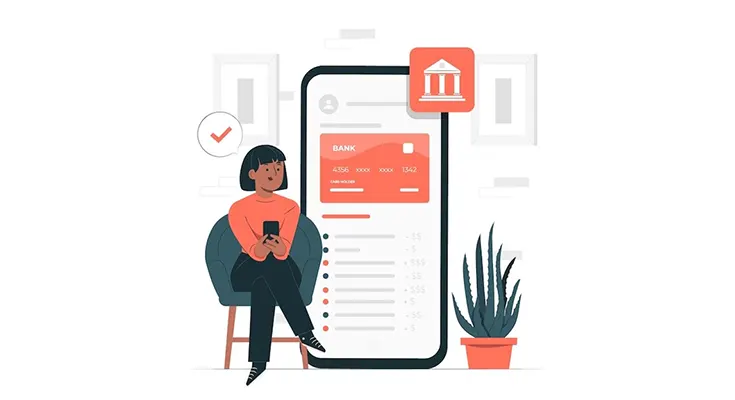UPI Lite is an innovative feature within India’s Unified Payments Interface (UPI) ecosystem, designed to make low-value, everyday transactions smoother, faster, and more efficient. This feature is especially useful for transactions where speed and simplicity are key, such as small purchases at local shops, street vendors, or regular payments for services.
UPI Lite allows users to conduct these transactions without constantly accessing their bank accounts, improving both the user experience and the security of small payments. Here is a comprehensive guide to understanding the benefits of UPI Lite for everyday transactions.
What is UPI Lite
UPI Lite is a streamlined version of the standard UPI payment system that enables users to make transactions of smaller amounts (usually capped at Rs. 200 per transaction) with minimal steps and faster processing times. Essentially, UPI Lite creates a secondary wallet within the UPI system where users can store funds specifically for making small transactions.
Unlike regular UPI transactions, which require bank authorisations each time, UPI Lite transactions are processed directly within the app, without needing PIN authentication for each transaction. This makes it ideal for situations where users want to make quick and frequent payments.
1. Enhanced speed for small transactions
For every day, low-value transactions, speed is crucial. UPI Lite removes the need to access the bank’s servers for each transaction, eliminating delays. By processing payments directly through the app’s wallet, UPI Lite makes transactions significantly faster.
This is ideal when making small purchases in busy settings, like markets or metro stations, where waiting for a transaction to process could be inconvenient. Imagine being able to pay a vegetable vendor or street food vendor instantly, without waiting for bank authorisations. This smooth experience is possible with UPI Lite.
2. Simplified user experience with no repeated PIN entry
One of the biggest advantages of UPI Lite is the removal of the requirement to enter a PIN for each transaction. While PINs add security, having to enter a PIN for every small transaction can become tedious. With UPI Lite, users can make payments up to a certain limit without the need for authentication each time, saving time and effort while maintaining security standards.
This makes UPI Lite particularly appealing for those who frequently make small payments throughout the day. For example, if you are purchasing small items like tea, snacks, or a quick recharge, you can now do so without repeatedly entering your PIN, making the transaction process both simpler and more convenient. For those looking for an easy-to-use UPI wallet, apps like Google Pay and Bajaj Pay are compatible with UPI Lite, providing a user-friendly platform for everyday use.
3. Enhanced security for bank accounts
With traditional UPI transactions, each payment involves a direct connection to the user’s bank account. For frequent small transactions, this repeated access can increase the risk of exposure. UPI Lite, however, uses a wallet approach, meaning funds for everyday purchases are stored in a separate account within the UPI app, reducing the need to frequently access the main bank account.
This setup not only adds convenience but also adds a layer of security. If a phone is lost or a transaction goes awry, the amount at risk is limited to the balance in the UPI Lite wallet, not the entire bank account. It is an added layer of protection that gives users peace of mind for everyday payments.
4. Reduced load on banking systems
One of the challenges banks face with UPI is managing the high volume of low-value transactions. Each transaction request, even for a small amount, puts a load on the bank’s servers. UPI Lite eases this load by handling small transactions independently within the app.
With UPI Lite, these low-value transactions are processed without involving the bank every time, which helps reduce server load and can contribute to a more efficient banking system. It is a benefit for users and banks alike, as it leads to fewer transaction failures and improves the overall speed and reliability of UPI for all types of transactions.
5. Better control over daily spending
UPI Lite enables users to load a specific amount of money into a wallet, which can be used exclusively for small, everyday transactions. By keeping these funds separate from the main bank account, UPI Lite users can better control their daily spending. Instead of dipping into their main account multiple times a day, they can load a set amount (for example, Rs. 500 or Rs. 1000) into UPI Lite and use it specifically for small expenses.
This setup makes it easy to track and limit daily spending, as users know exactly how much they have set aside for these types of transactions. It is a great way to manage cash flow, especially for those who want to avoid overspending or prefer a disciplined approach to small expenses.
6. Offline payment capabilities
A significant benefit of UPI Lite is its ability to support offline transactions. In areas where internet connectivity may be poor or during network downtimes, UPI Lite can still process payments as long as there is minimal network availability.
This offline capability makes it reliable and practical for situations where full internet access might be a challenge.
7. Ideal for low-value, high-frequency payments
For transactions like paying auto-rickshaw fares, buying a coffee, or paying for small items at local stores, UPI Lite is perfect. These transactions tend to be high in frequency but low in value, which is exactly what UPI Lite was designed to handle.
By creating a streamlined approach for small, recurring transactions, UPI Lite has optimised the experience for users who make frequent payments, helping them avoid the hassle of repeated authentication.
8. Reduced dependency on physical cash
UPI Lite significantly reduces the need for carrying cash, as users can use their digital wallet for everyday transactions. This is especially useful for users who prefer a cashless experience for reasons of convenience or hygiene.
Moreover, it means fewer trips to ATMs, reducing the time and effort involved in cash management for small expenses.
9. Growing availability across merchants
Since UPI Lite is designed for small transactions, it is widely accepted across merchants, from small roadside stalls to convenience stores and local vendors.
As awareness and adoption of UPI Lite grow, more merchants are likely to start accepting it, adding to its accessibility and usefulness.
10. Simplified payment process in one app
Using a single UPI Lite-enabled app allows users to manage both large and small payments without switching between apps. This centralisation is especially beneficial for those who want to keep their financial transactions in one place, avoiding confusion and making money management simpler.
Apps like Google Pay or Bajaj Pay, for instance, provides an easy way to manage UPI Lite transactions and regular UPI payments in one place, offering a seamless experience for users who need to handle both small daily expenses and larger payments.
Conclusion
UPI Lite is transforming how small, everyday transactions are managed, making them faster, simpler, and more secure. By creating a secondary wallet for these payments, users gain control over their spending, reduce the frequency of accessing their bank account, and experience the convenience of a contactless, cashless payment system.
With offline capabilities, reduced dependency on PIN entry, and added security benefits, UPI Lite has quickly become a valuable tool for those seeking an efficient way to manage their daily expenses. As it becomes more widely adopted, UPI Lite stands to redefine the landscape of digital payments for low-value, high-frequency transactions in India.





